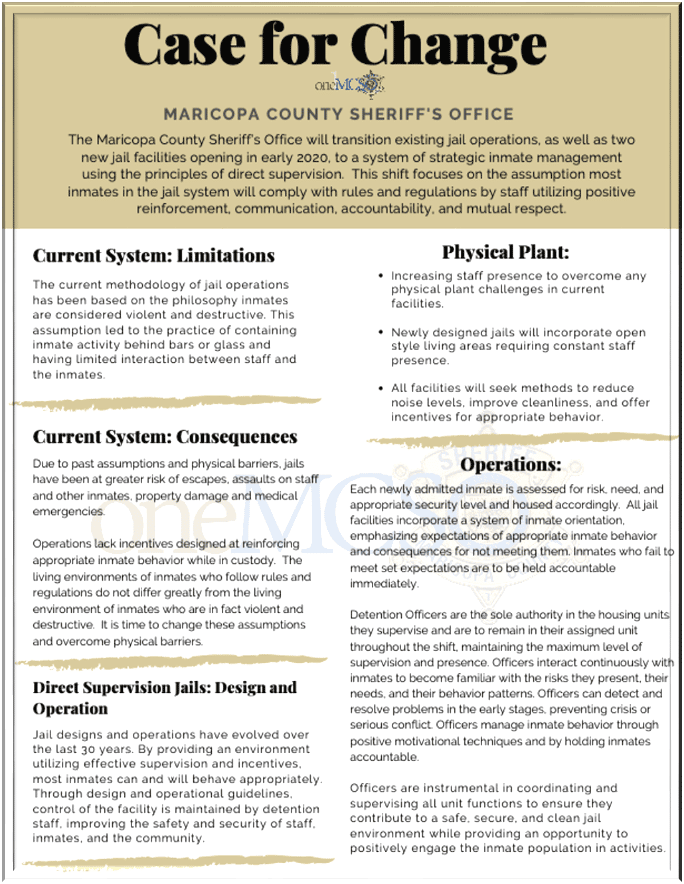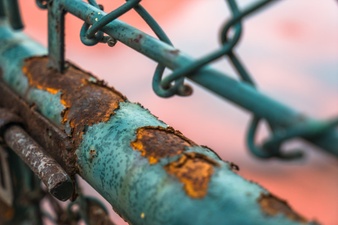
How to Build & Maintain a Healthy Facility Culture for Staff and Incarcerated Individuals
For me, one of the most interesting and eye-opening aspects about taking on a new career in corrections and detention systems consulting was that initial feel I got walking in the front door of each prison, jail, or even court facility I entered with a project team. It was almost immediate – from the moment I set foot into the front lobby, I started to develop a keen insight of what that organization’s culture looked like. What made this so interesting to me was how it varied from location to location and just how unaware the staff and administration were of what their culture felt like from the outside looking in.
Getting an Outside Perspective
As a former jail chief, it wasn’t quite as obvious to me. I grew up in my agency and I always assumed jails just were what they were: a dirty, loud, smelly place where nobody wanted to be, including those who worked there.
But as I began to venture out later in my career exploring options for new ways to operate, I learned correctional facilities and jails have a very wide range of “feel”, or the way one feels when they are working within the facility. Now that I have experienced so many different institutions, I understand this “feel” is attributed to the agency’s culture.
How do You Measure Up?
Do you often wonder how your facility or agency measures up to the rest of the world; or how it is possible to change the direction of such a large ship that has been on the same course for such a long period of time? I’ve been there, and I’d like to share some tips to help you better understand how your facility’s culture impacts its mission and how to go about making desired change.
Let’s start with getting an understanding of your current situation. Here are a few of the main things I notice when stepping into a facility I have never visited before and are all major components of a facility’s “feel”:
- General physical condition of the building: before setting foot in your facility, do you notice overgrown landscaping, peeling paint, cracked windows, or overflowing trash cans? These are all an immediate red flag that the facility culture is suffering. Can you smell your facility from down the street as you drive up? If so, you can bet that smell is a sign of bigger, underlying issues. And yes, it is related to the organization’s culture.
- Personal interaction and communication with the staff, visitors, and the incarcerated population: When I am meeting with staff on a project and an officer feels completely comfortable dropping an “F-bomb” in our conversation, it is easy for me to get a feel for the level of professionalism accepted in that environment. Don’t get me wrong, I am an ex-sailor and do not easily get offended, but I have come to learn that when staff say things like, “what do you expect? this is jail…”, I understand they have been conditioned to believe by nature the environment should be harsh and dirty. This self-fulfilling prophecy welcomes failures such as damage to property, assaults on inmates and staff, escapes, suicides, and so on. Have you ever heard the phrase, “people will live up to or down to our expectations of them”? Communication between staff and with the incarcerated plays a huge role in facility culture.
- Incarcerated Living Areas. This is where the rubber really meets the road. When I observe a clean, quiet inmate living area where an inmate walks up to me and says, “Good morning, sir!” I get the feeling that professionalism, safety, and security are all taken seriously here. On the other hand, covered windows, graffiti, high noise levels and minor infractions such as not wearing uniforms properly point to the fact that supervision and oversight are lacking. Inmates are running these areas and not corrections staff. And that’s not safe or effective for anyone involved.
Consider how your facility stacks up in the three areas above.
Why It Matters and Why You Should Care
A facility’s culture is essentially its DNA, made up of expectations, practices, and what its managers value most from their staff. In the private sector, an organization’s culture can serve as a window into its success or failures as the result of these elements. In correctional facilities, the culture can have a direct impact on safety, security, cleanliness and its perception in the public eye, which are all equally important measures of the institution’s success.
So why is culture or a facility’s “feel” important to a manager or administrator? A negative facility culture is an invitation for simple problems that, when left unaddressed, contribute to bigger problems and the continued downward cycle of the organizational culture. Examples include lawsuits, federal oversight, negative press, lapses in safety, staff retention issues, and the list goes on…
Making the Desired Change
Several years ago, I had a team of consultants touring jail facilities in my system and I was prepared to hear just how well run they were. I was astonished by the fact that the consultants found them to be subpar against industry standards(!) and once they pointed out some of these simple observations, I began to ask myself, “How did I not notice these obvious issues and how can I ever have an impact on changing this direction, especially in such a large system with so many people involved?”
One of the consultants who was also a county sheriff himself gave me the following recommendation, which I’ve since found to be a solid starting point when assessing facility organizational culture:
“Close your eyes and imagine the ideal condition of your facility. What does it look like, sound like, smell like, and feel like? Now break those characteristics down into their most simple elements and work backwards.”
So that’s exactly what we did. Turns out, when you break down these conditions in their most basic context, the solutions become simple and you can begin to identify tangible courses of action to evoke change and build a healthier facility culture. This exercise was extremely helpful for our agency. Looking back on my experience, there are three key take aways I want to leave you with:

When implementing a cultural change, communication and staff buy-in is key. While transitioning MCSO to Direct Supervision, one of the tools we found super helpful was distributing our “Case for Change” newsletters to staff and our incarcerated population. Keeping everyone in the loop made everyone feel part of the process and emphasized to them just how important the change was to the organization.
- Celebrate Successes. Nothing feels better in this world than to complete a task; to feel like you’re part of a team. This goes for staff and inmates. Recognize the accomplishment, reward it, and present the next challenge.
- Be Realistic in Implementing Change. Many correctional facilities have become overwhelmed with changes such as advances in security electronics, electronic inmate management systems, tablet technology, federal oversight requirements, and whichever other latest trends are looming. Make your desire to change the facility culture achievable by moving only as fast as there is capacity for. Sending another email about impending change and unrealistic timelines and expectations will be a certain recipe for failure.
Creating a healthy facility culture will not happen overnight and it is not easy. If it was, the last guy would have fixed it. But now it is yours to manage, what will you pass along to the next person in your shoes?






